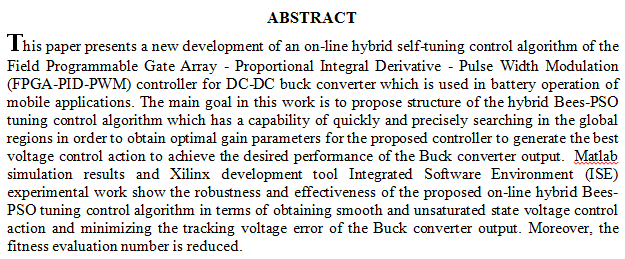
This study thoroughly investigates the potential of niobium oxide (Nb2O5) thin films as UV-A photodetectors. The films were precisely fabricated using dc reactive magnetron sputtering on Si(100) and quartz substrates, maintaining a consistent power output of 50W while varying substrate temperatures. The dominant presence of hexagonal crystal structure Nb2O5 in the films was confirmed. An increased particle diameter at 150°C substrate temperature and a reduced Nb content at higher substrate temperatures were revealed. A distinct band gap with high UV sensitivity at 350 nm was determined. Remarkably, films sputtered using 50W displayed the highest photosensitivity at 514.89%. These outstanding optoelectronic properties highlight Nb2O5 thin f
... Show More (24)
(24)
 (5)
(5)
In this work, multilayer nanostructures were prepared from two metal oxide thin films by dc reactive magnetron sputtering technique. These metal oxide were nickel oxide (NiO) and titanium dioxide (TiO2). The prepared nanostructures showed high structural purity as confirmed by the spectroscopic and structural characterization tests, mainly FTIR, XRD and EDX. This feature may be attributed to the fine control of operation parameters of dc reactive magnetron sputtering system as well as the preparation conditions using the same system. The nanostructures prepared in this work can be successfully used for the fabrication of nanodevices for photonics and optoelectronics requiring highly-pure nanomaterials.
In this work, metal oxide nanostructures, mainly copper oxide (CuO), nickel oxide (NiO), titanium dioxide (TiO2), and multilayer structure, were synthesized by the DC reactive magnetron sputtering technique. The effect of deposition time on the spectroscopic characteristics, as well as on the nanoparticle size, was determined. A long deposition time allows more metal atoms sputtered from the target to bond to oxygen atoms and form CuO, NiO, or TiO2 molecules deposited as thin films on glass substrates. The structural characteristics of the final samples showed high structural purity as no other compounds than CuO, NiO, and TiO2 were found in the final samples. Also, the prepared multilayer structures did not show new compounds other than th
... Show More (26)
(26)
 (8)
(8)
 (1)
(1)
 (1)
(1)
planning is among the most significant in the field of robotics research. As it is linked to finding a safe and efficient route in a cluttered environment for wheeled mobile robots and is considered a significant prerequisite for any such mobile robot project to be a success. This paper proposes the optimal path planning of the wheeled mobile robot with collision avoidance by using an algorithm called grey wolf optimization (GWO) as a method for finding the shortest and safe. The research goals in this study for identify the best path while taking into account the effect of the number of obstacles and design parameters on performance for the algorithm to find the best path. The simulations are run in the MATLAB environment to test the
... Show More (5)
(5)
 (4)
(4)
Artificial pancreas is simulated to handle Type I diabetic patients under intensive care by automatically controlling the insulin infusion rate. A Backstepping technique is used to apply the effect of PID controller to blood glucose level since there is no direct relation between insulin infusion (the manipulated variable) and glucose level in Bergman’s system model subjected to an oral glucose tolerance test by applying a meal translated into a disturbance. Backstepping technique is usually recommended to stabilize and control the states of Bergman's class of nonlinear systems. The results showed a very satisfactory behavior of glucose deviation to a sudden rise represented by the meal that increase the blood glucose
... Show More
Abstract
In this work, pure Polypyrrole (PPy) and Polypyrrole (PPy)/Graphene (GN) was synthesized by in-situ polymerization in different weight percentages (0.1, 0.3, 0.5, 1, 3 and 5 wt.% (g)) of GN nano particles using chemical oxidation method at room temperature. The FTIR, SEM and electrical properties were studies for the nano composites. The result show that when concentration of GN Nano particle increase, the electrical conductivity increased and the graphene sheets were merging to form a continuous area of the GN through the polypyrrole base material. The FTIR spectra shows that the characteristics absorption peaks of polypyrrole that is, 1546.80, 1463.87 and 3400.27 cm-1(stretching vibration in the pyrrol
... Show More (2)
(2)
 (15)
(15)
 (11)
(11)
